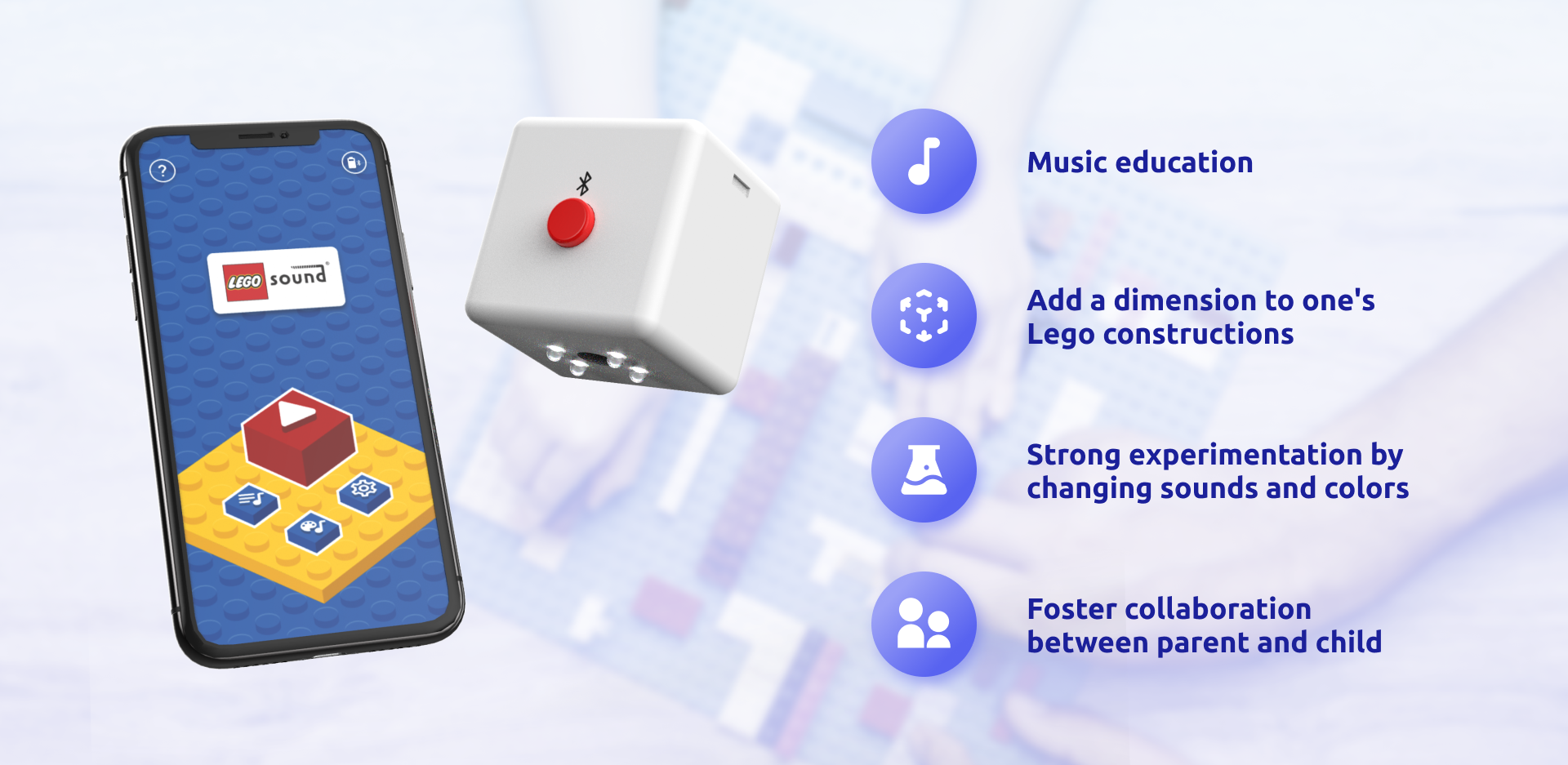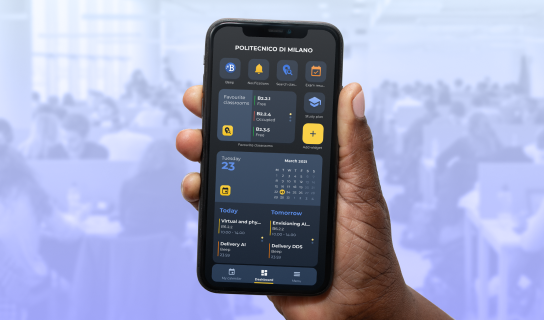LEGO Sound
A game created starting from the famous and colorful Lego bricks, bringing a sound dimension to colors and buildings. This is possible thanks to the Brickbeat device, made with an Arduino nano 33 BLE and a color sensor.

Design duration: 3 months

Main project team: 4 UX/UI Designer (Ludovica Bonaldo, Giulia Gobetti, Francesca Macolino, Luca Meneguzzo)

Skills used: Wireframes, UX design, UI design, UX research, Digital & physical prototyping, Coding, 3D modelling, Soldering

Tools: Figma, Keyshot, Illustrator, Indesign, Miro, Protopie, Arduino IDE (C++), Fusion 360

Employer: Politecnico di Milano

Have digital & physical work together
The starting brief was to start with a physical game, whether it was with cards, board or any other medium, and give it a new life by adding a layer of digital interaction. The target is not imposed: it can range from 0 to 99 years old and beyond.
Project goal
The starting concept was to build an app that would allow Lego bricks to play music. Exploiting the power of an Arduino board, we wanted to associate a sound to each color, and allow the user to create their own melodies in a fun and novel way.
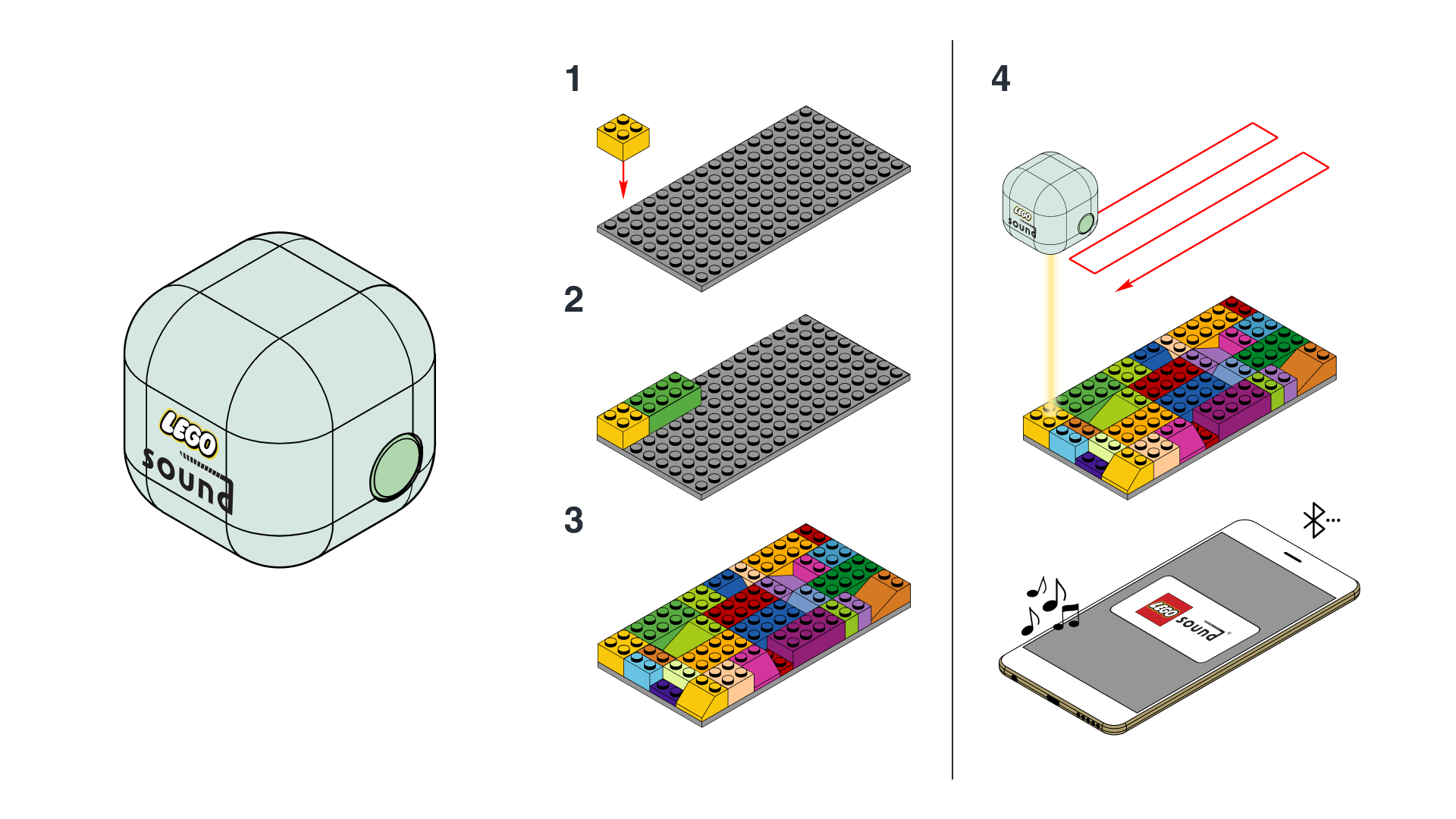
Target
To identify the target audience, we looked at several games designed by Lego that went beyond simple construction. Taking Lego Hidden Side, Lego Education and Lego Technic as examples, we identified the ideal user as a child aged ten and up, so that they can approach the game with some awareness and take advantage of the possibilities of the game.

Information architecture
For the information architecture of Lego Sound, we took classic mobile games as a reference, using a hub & spoke as the basic structure. This allows the child to move intuitively between sections, as it is a structure familiar from many video games.

Appearance and colors
The look of the interface is based on other similar apps released by Lego, but mostly on the classic brick. Starting from the home, the main buttons are isometric, giving depth and recalling the brand as much as possible. Even the colors chosen are the original ones used for the bricks.
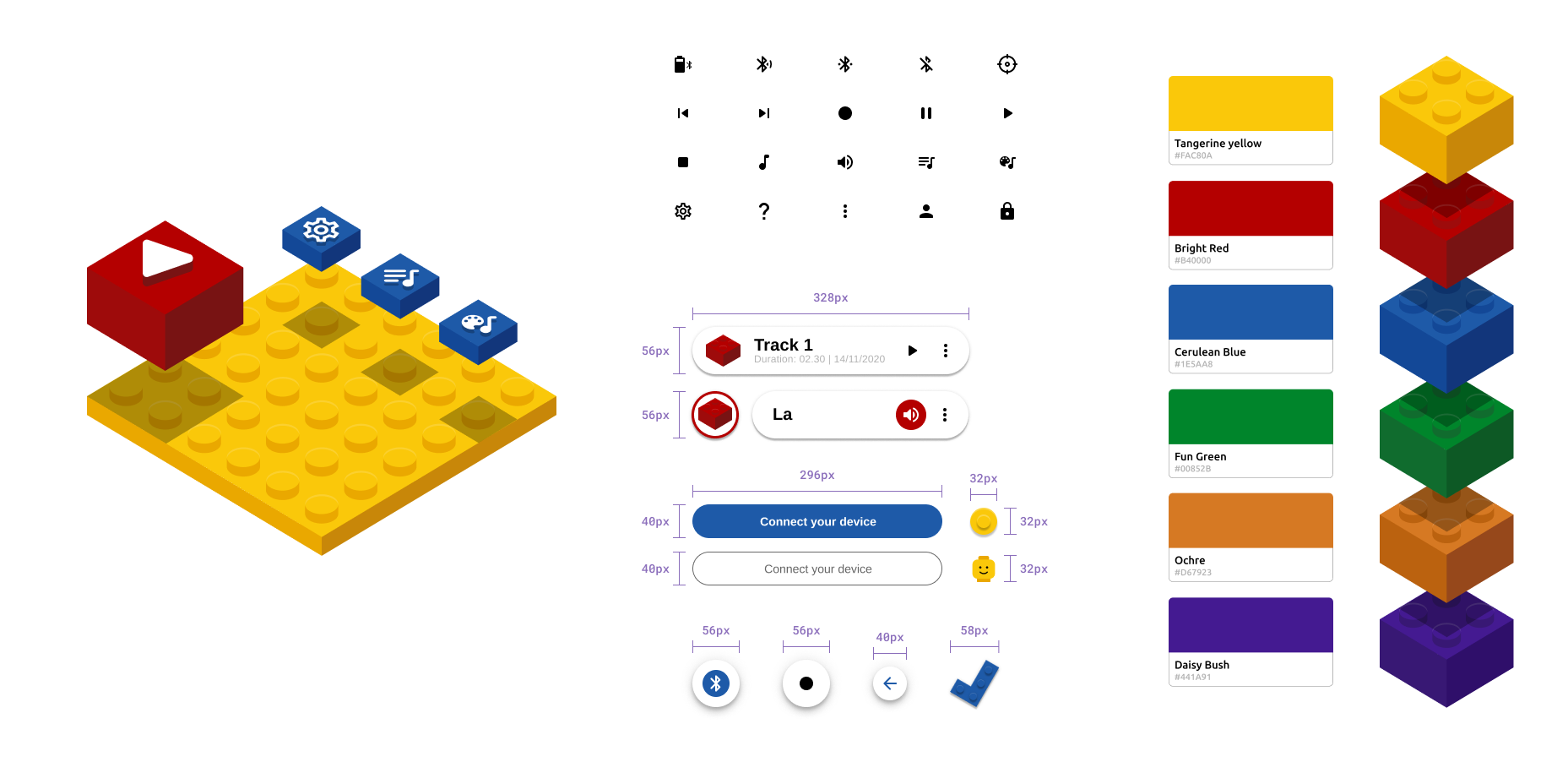
How to play
Getting started with the game is very simple. After the child turns on the Brickbeat and connect with the app, they can create a sequence of colored bricks. By entering the play mode and passing the device over the colors, the smartphone will start playing the corresponding sounds, starting to create music.
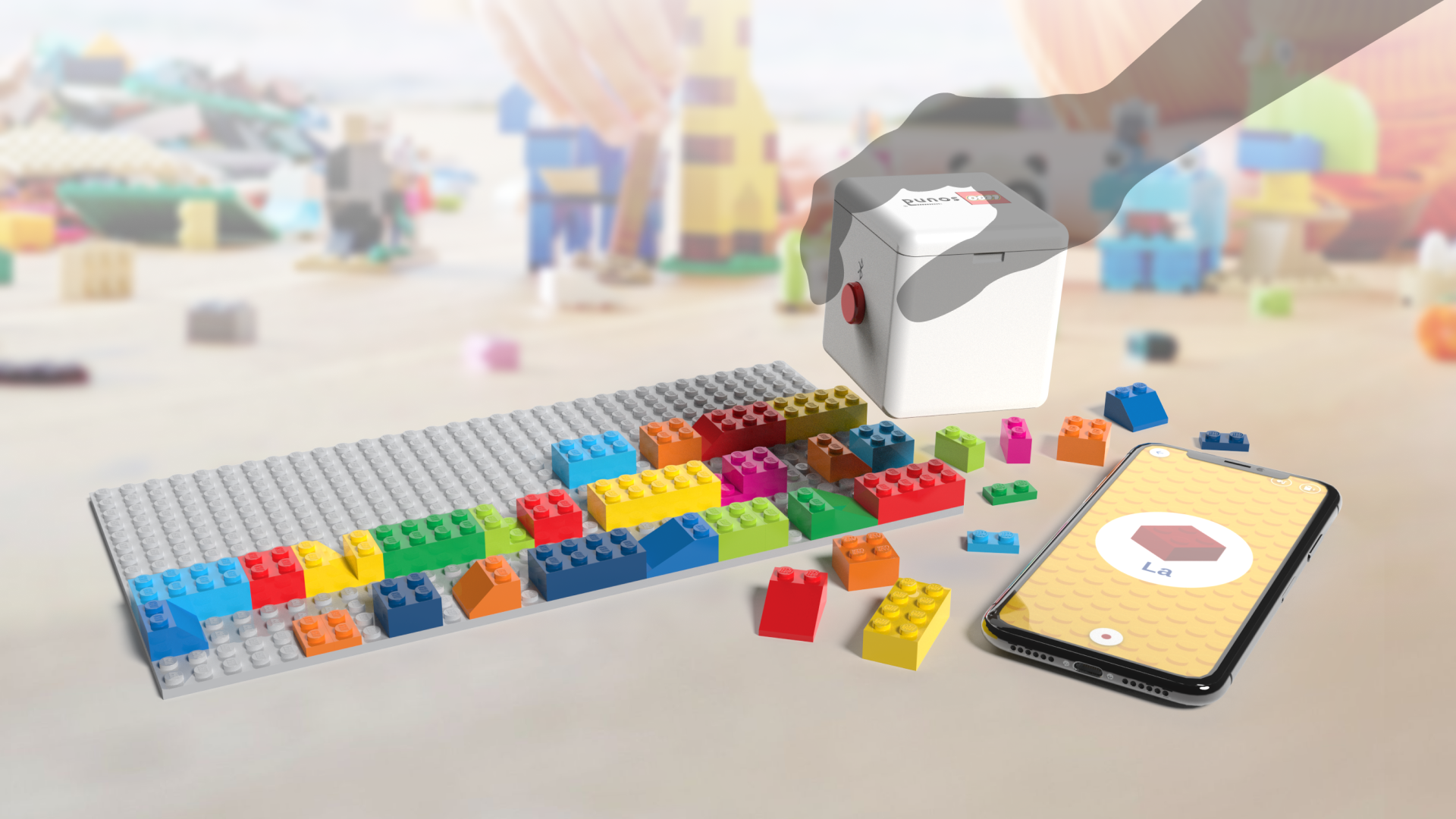
Play mode
Play mode is the main section of the app. Entering the screen you can quickly check saved colors and associated note, check the connection and battery status of the Brickbeat, and of course produce sounds by scanning bricks. You can also record your own audio track and save it to your device, to listen to it later.

Recorded tracks & library
There are two other sections in the app. My tracks lets you listen to an audio track previously saved in play mode, and organize it into albums. Instead, in Library it is possible to change the notes associated with the colors and add new ones, even by combining several sounds to create chords.

Connections
The code that allows the Brickbeat to work is written in C++ with Arduino IDE. In order to use Protopie, it was necessary to install an app that acts as a bridge, receiving via bluetooth commands from the Arduino (such as colors and calibration commands) and then sending them to Protopie and modifying the interface.

Inside the Brickbeat
Inside the Brickbeat is an Arduino nano 33 BLE, the beating heart of the project, a TSC 3200 color sensor and a battery, that can be replaced via the dedicated slot. Moreover, there is a button to enable and disable the connection (entering in a energy saving mode) and a switch, to completely shut down the device.
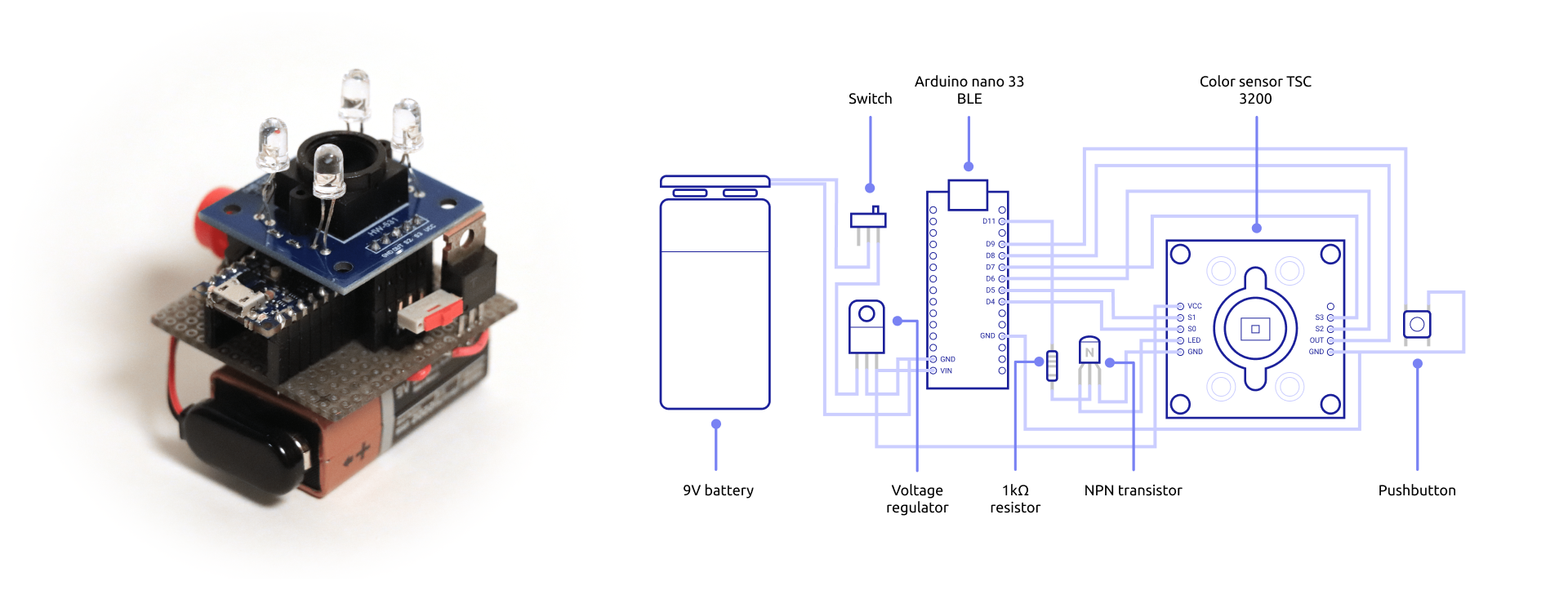
To complete the device, a body was also made, modeling it on Fusion 360 and then 3D printing it. The main difficulty of this project was to build something as small as possible, so that it can be grabbed by a child’s hand. That’s why the components were fitted as efficiently as possible to save space, without affecting its feasibility.
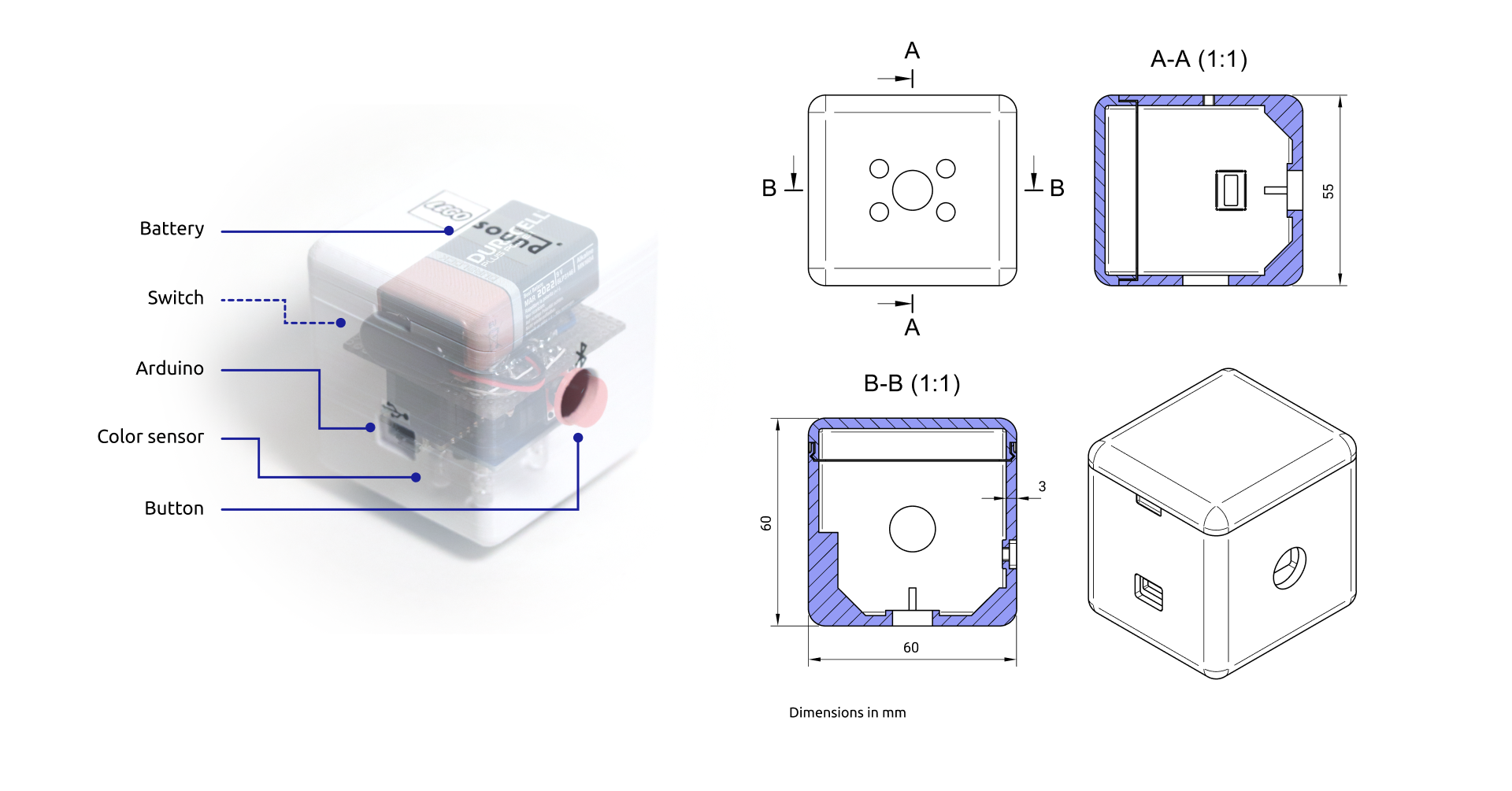
Additional material
You can check out the entire design process in more detail and explore the full prototype of the app. If you need more information, you can always contact me.
Strenght points
The strengths of this project are many. It gives a first approach to music, using a game present in all children’s homes, allowing them to learn by experimenting. It can be used not only on rows of neat bricks, but on the constructions themselves, adding a new level of playability. Finally, it encourages parents to be active participants in the game, teaching and learning with the child at the same time.
- Music education
- Add a dimension to one’s LEGO constructions
- Strong experimentation by changing sound and colors
- Foster collaboration between parent and child
